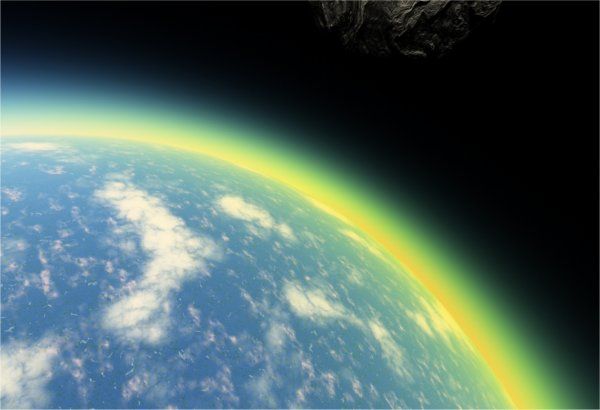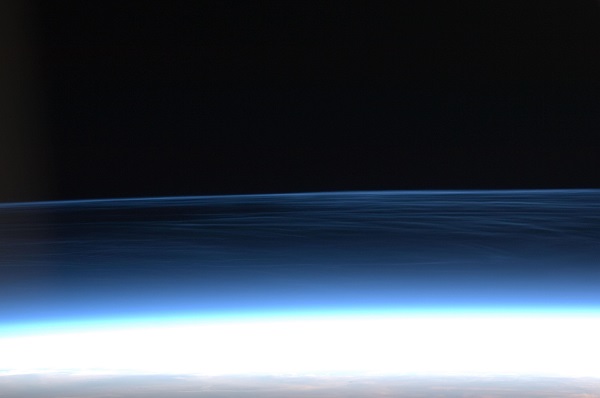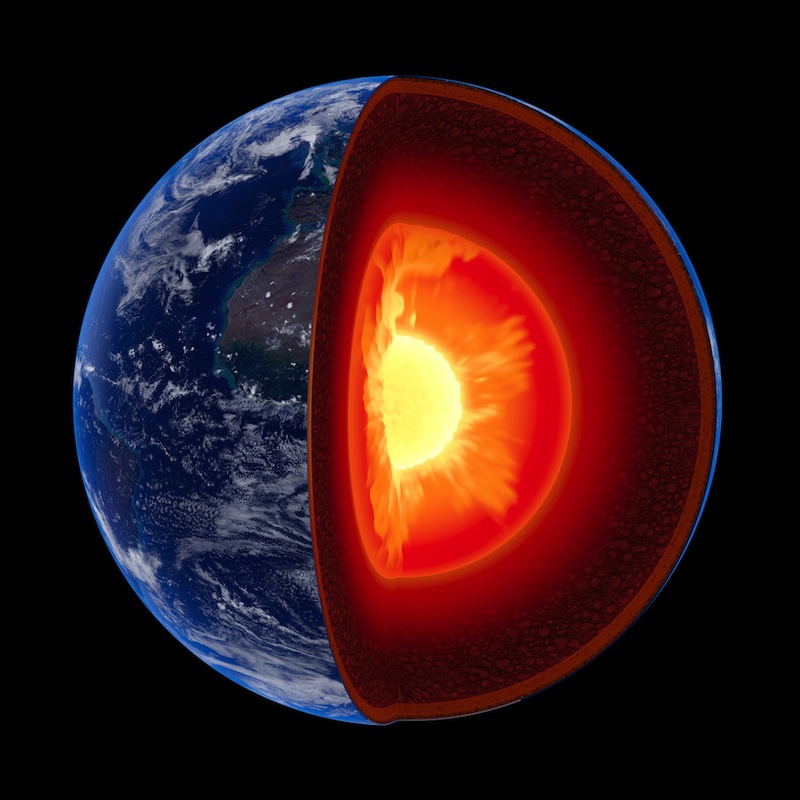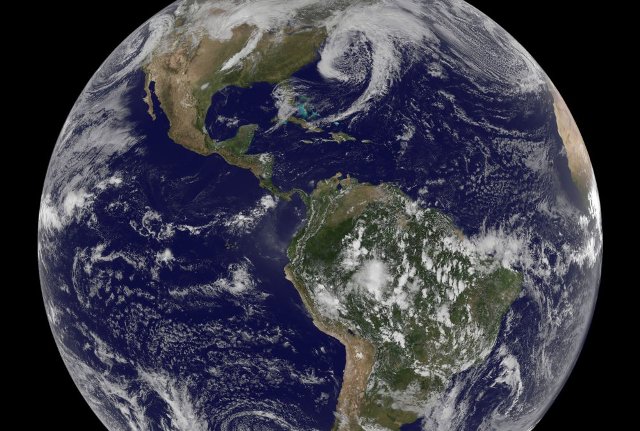Stratosphere
The stratosphere is the second-lowest layer of Earth's atmosphere. It lies above the troposphere. It contains the ozone layer, which is the part of Earth's atmosphere. The stratosphere defines a layer in which temperatures rise with increasing altitude. This rise in temperature is caused by the absorption of ultraviolet radiation (UV) from the Sun by the ozone layer, which restricts turbulence and mixing.
ozone layer
 source: internet
source: internet
Pollution on Earth risks the destruction of this layer, which in turn risks the health of all living things. The stratosphere is almost completely free of clouds and other forms of weather. However, polar stratospheric or nacreous clouds are occasionally seen in the lower part of this layer of the atmosphere where the air is coldest. This is the highest layer that can be accessed by jet-powered aircraft.
Stratopause separates stratosphere from mesosphere.
Mesosphere
The mesosphere is the third highest layer of Earth's atmosphere, occupying the region above the stratosphere and below the thermosphere. Temperatures drop with increasing altitude to the mesopause that marks the top of this middle layer of the atmosphere. It is the coldest place on Earth.
 source: internet
source: internet
The Mesosphere slows down fragments of heavenly bodies, such as shooting stars and meteorites as they fall to Earth from Outer Space. As they fall these fragments disintegrate and burn out.
It is too high above Earth to be accessible to jet-powered aircraft and balloons, and too low to permit orbital spacecraft. The mesosphere is mainly accessed by sounding rockets and rocket-powered aircraft.
Mesopause separates mesosphere from ionosphere.


